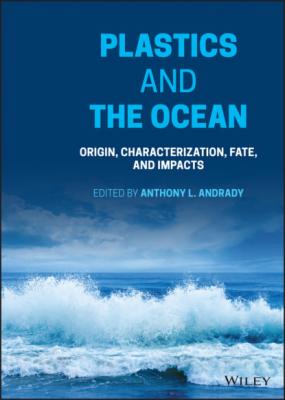Plastics and the Ocean. Группа авторов
Читать онлайн.| Название | Plastics and the Ocean |
|---|---|
| Автор произведения | Группа авторов |
| Жанр | Химия |
| Серия | |
| Издательство | Химия |
| Год выпуска | 0 |
| isbn | 9781119768418 |
Table 1.6 Characteristics of plastics typically encountered in marine debris.
Source: Polyethylene data from Peacock (2000).
| Crystallinity (%) | Melting point (°C) | Extensibility (%) | Young’s Modulus, G (Pa) | |
|---|---|---|---|---|
| LDPE | 50–60 | 105 | 200–600 | 0.13–0.3 |
| HDPE | 60–80 | 125 | 500–700 | 0.266–0.525 |
| LLDPE | 40–60 | 125 | 300–900 | 0.5–1.1 |
| PP | 40–60 | 150–175 | 100–600 | 0.9–1.55 |
| PS (GPPS) | — | — | 1.2–2.6 | 1.2–2.6 |
| PS (HIPS) | — | — | 15–65 | |
| PVC | 10–30 | — | 11.9–80.0 | 2.14–4.14 |
| PET | 30–40 | 260 | 30–300 | 2.76–4.14 |
| Nylon 6 | — | 255 | 25–50 | |
| Cellulose Acetate |
Figure 1.13 Left: Illustration of the molecular geometry of LDPE and HDPE. Middle; LDPE sandwich bag. Right: HDPE milk jug. (Images: Courtesy of Alana Andrady)
1.7 Societal Benefits of Plastics
Behind the dramatic success of plastics as a material is the unique combination of properties that makes them particularly versatile and suitable for a broad range of applications. Plastics offer a combination of engineered functionality with a high degree of design freedom, delivered at a price that is competitive with alternative materials. To understand the consistently increasing demand for plastics worldwide, it is useful to briefly survey the main benefits of the material in several of their key application areas. Figure 1.2 that compares the mix of plastics produced worldwide annually (2015 data from Geyer et al. 2017 recalculated to exclude additives as they are not polymers) to their application areas, is a convenient starting point for the discussion. The advantages of PE and PP that account for about half the global resin in popular applications are especially impressive. Table 1.7 lists the common application areas for thermoplastics with typical uses.
Table 1.7 Applications of common types of plastics.
Source: Rudolph et al. (2017).
| Application | Plastics Commonly Used | Specific Use |
|---|---|---|
| Packaging | PET, HDPE, PP, LDPE, PVC PP, HDPE, LDPE, PVC LDPE, PP, PVC, PET LDPE, HDPE, PP PP, HDPE, LDPE, PVC | Bottles, flasks Closure items, bottle caps Films Bags, sacks Jars, boxes, tubs |
| Building | PVC, PP, HDPE, LDPE, ABS PU, EPS, XPS PVC PE, PVC PS, PMMA, PC, POM, PA | Pipes and ducts Insulation Windows and other frames, flooring, and wall coverings Lining Interior fittings |
| Automative | PP, ABS, PC/PBT PU, PP, PVC, ABS, PA PP, ABS, PPE, PC HDPE, POM, PA, PP, PBT PP, PPE ABS, PP, PBT, POM, PP PC, PBT, ABS, PMMA | Bumper Seats Dashboard Fuel system Body Interior trim Lighting |
| Agriculture | LDPE, LLDPE, PP LDPE, LLDPE LDPE, HDPE PP PVC, LDPE HDPE, PS, PP | Bale bags, seed bags Greenhouse covers, silo covers, mulch film Nets and mesh Rope, strings Pipes and fittings Pesticides containers, nursery pots |
| Electronics | PS, HIPS, SAN, ABS, PP ABS, PC/ABS, HIPS, POM PPE/PS, PC/ABS, PET PC/ABS, ABS, HIPS ABS, PC/ABS, HIPS PS, ABS, PU, PVC PP, PS, ABS, PVC | Printers/faxes Telecommunications equipment Televisions Monitors Computers Refrigeration Dishwashers |
Abbreviations: ABS – Acrylonitrile‐butadiene‐styrene copolymer; PC – polycarbonate: PMMA (poly(methyl methacrylate); POM – poly(oxymethylene); and XPS – expanded extruded polystyrene.
1.7.1 Packaging Food and Beverage
Packaging, the leading application of plastics has a global market size exceeding US$240B. Over half the plastic packaging is used in the food and beverage sector. Industrial packaging and non‐food consumer packaging, each account for less than half of that volume. About 56% of plastic packaging is PE, with PP (22%), PET (10%), while some PS is also used (Mackenzie 2019).
Packaging addresses a key problem of the Anthropocene, the unprecedented wastage of food in the supply chain as well as by consumers. Globally, an estimated 1/3 of food intended for human consumption invariably ends up as waste (Gustavsson et al. 2011); food wastage in the US is even higher, by at least a third, compared to that in other countries. Along with food, all the resources, including fossil fuel invested in their production, are also wasted and it is critical to minimize this waste. An industry study in the US recently found significantly less food wastage with packaged, compared to unpackaged, food (Ameripen 2018). Plastics packaging achieves this reduction primarily by extending the shelf life of food throughout the supply chain and by managing portion sizes. The weight fraction of packaging needed for this purpose is relatively low, compared to that of food or beverage. This is also true both in terms of the monetary, and the environmental cost of the package, compared to that of the food. Life cycle analysis (LCA) comparing different packaging materials for beverage,
